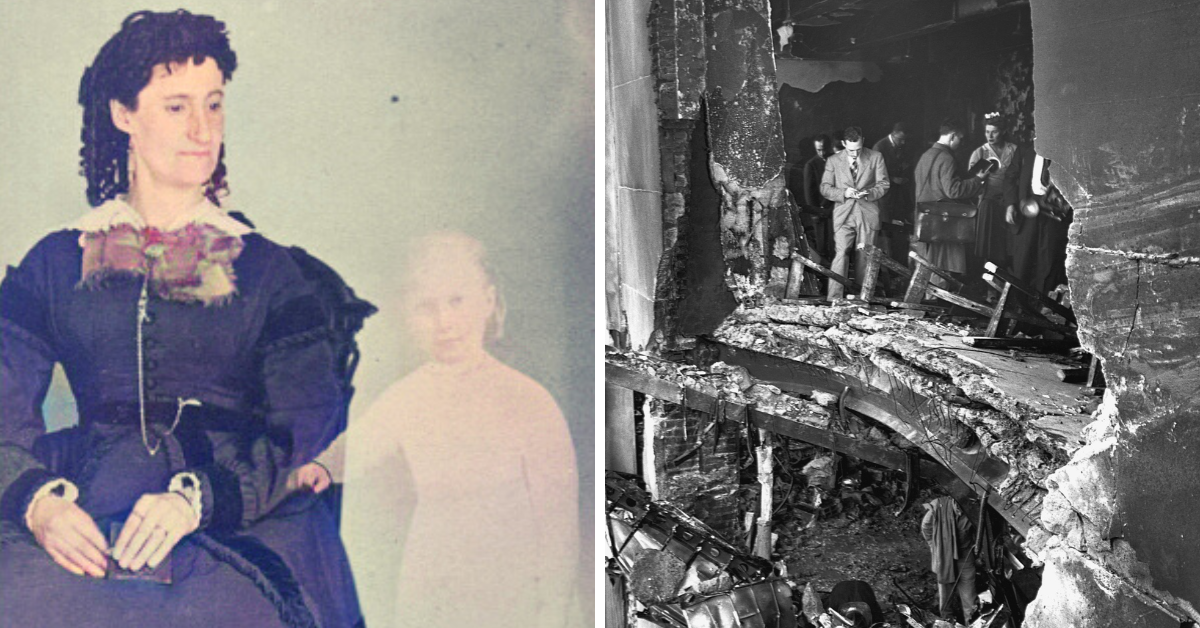These rare historic photos and the stranger-than-fiction stories behind them are making our jaws drop!
1. The Empire State Building after a US B-25 bomber crashed into it on July 28, 1945
On July 28, 1945, a United States B-25 bomber plane crashed into the Empire State Building in New York City. Heavy fog that morning caused the freak accident that killed 14 people, including the two pilots and one passenger on board the plane. The crew was told to fly to Newark airport instead of LaGuardia airport, which was the original plan. This new route took them over Manhattan, where they were flying low to the ground for better visibility. The plane almost hit the Chrysler Building, and as the pilots swerved to avoid the skyscraper it went directly into the 78 and 79th floors of the nearby Empire State Building.
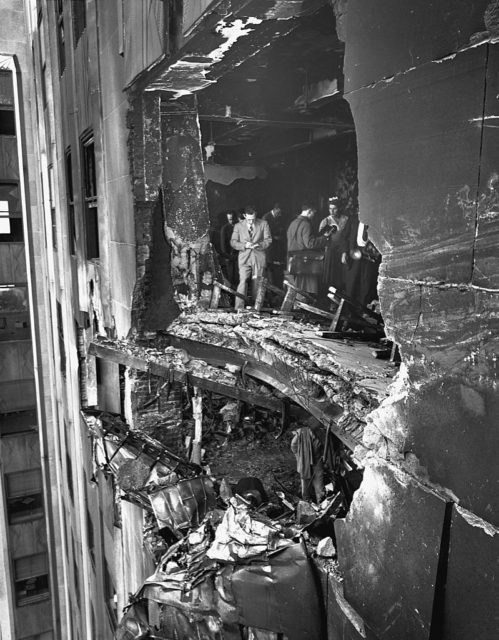
Remarkably, the Empire State Building stayed structurally sound after the crash but $1 million was needed to repair the huge hole that was left by the impact (over $10 million dollars today!). The picture above was taken after the crash, with people inside the building precariously close to the wreckage.
2. Spirit photography
Nothing is as creepy as seeing a ghostly apparition caught on camera, something 19th-century “spirit photographer” William Mumler made a successful career out of. His haunting portraits often depicted subjects with their loved ones who have passed on. With the growing spiritualist movement in its infancy in the 1840s, more and more people were interested in catching a glimpse of the afterlife.
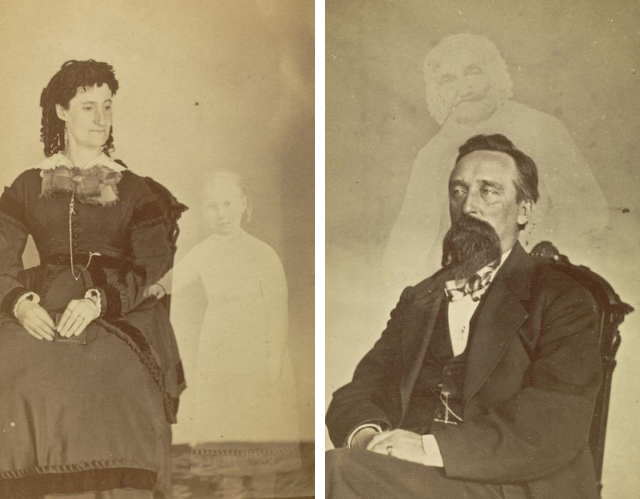
Mumler also exploited the immense loss following the American Civil War. More than 600,000 men perished between 1861 and 1865, many of whom never said goodbye to their families. The belief in a spirit world where the dead could contact the living founded a supernatural industry of products and services like ouija boards, séances, and spirit photos. Most historians believe Mumler’s photos are faked illusions, but no one has uncovered the secret of how he made the ghostly figures appear in photos.
3. McDonald’s opening in Moscow (1990)
The first McDonald’s in the Soviet Union opened in Moscow, Russia on January 31, 1990. Even though an order of a hamburger and fries cost most citizens several days’ wages, crowds lined up for hours to finally get a taste of the Western world. This monumental moment signaled the return of capitalism and the deterioration of the USSR.
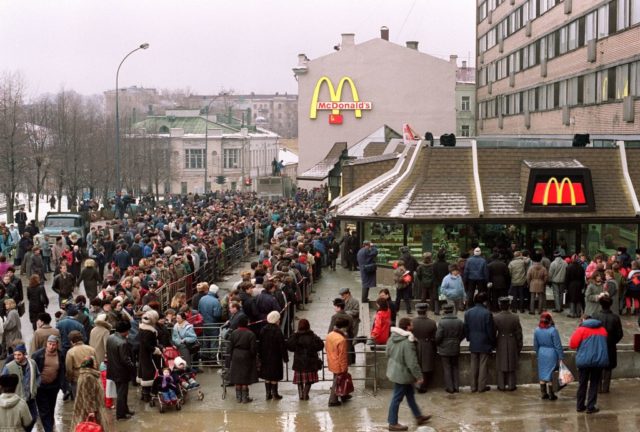
Recently, a similar scene to the photo above was seen in Moscow when large American companies like McDonald’s closed their doors to Russian consumers in the wake of the Russian attack on Ukraine. McDonald’s has opened 850 restaurants in Russia since 1990, but when the fast-food favorite announced in March 2022 that they would close all Russian locations, citizens again lined up in front of those iconic “golden arches” to have the last Big Mac for the foreseeable future.
4. Babe Ruth knocked unconscious
In July 1924, iconic baseball player Babe Ruth ran to catch a right-field ball heading for the foul line. As 24,000 fans cheered at Griffith Stadium in Washington DC, Ruth accidentally ran into a concrete wall and was knocked unconscious. After five minutes, Ruth finally opened his eyes to see his trainer Doc Woods and several police officers crowded around him.
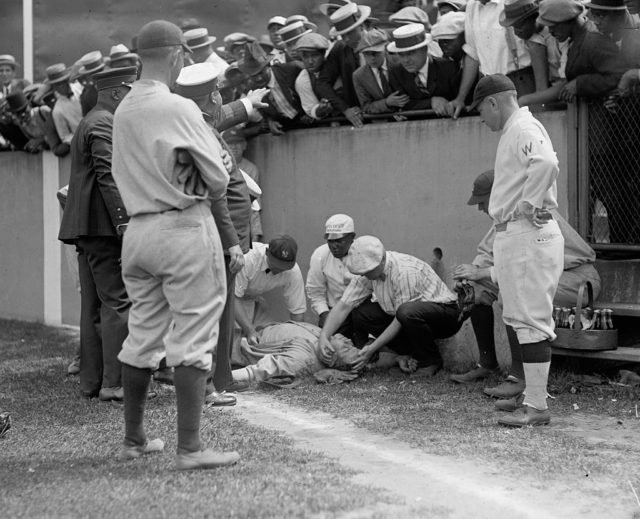
Once he was on his feet, Yankees manager Miller Huggins asked Ruth if he wanted to sit out the rest of the game. Being the star athlete (and maybe being a bit reckless), Ruth insisted that he continue to play. By today’s standards, he should have been taken to the hospital for a concussion – but knowledge of head injuries was limited at best in the 1920s.
This picture reveals not one but two interesting things about baseball in the early 20th century. The first is a very vulnerable image of a larger-than-life athlete, but the second detail involves the crowd looking down at the unconscious Babe Ruth. Ruth had actually collapsed in front of the racially segregated section of the stadium, showcasing a rare glimpse into racial relations in sports at the time.
5. The room where the Romanov family was executed
The tragic end of the Russian Imperial family, the Romanovs, is forever immortalized in this unsettling picture. On the evening of July 17 1918 Tsar Nicholas II, his wife Alexandra, and their five children: Olga, Tatiana, Maria, Anastasia, and Alexei were executed by the Bolsheviks. The Romanovs had been imprisoned at Ipatiev House in Yekaterinburg, over 2,000 kilometers from their homes (or should we say palaces) in St. Petersburg, prior to their execution.
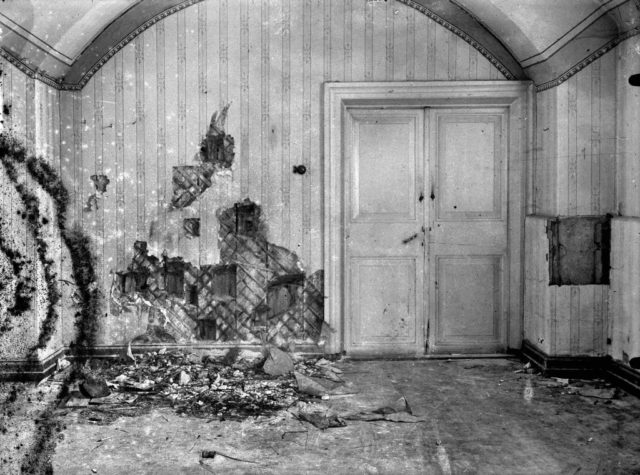
While at Ipatiev House, also nicknamed “The House of Special Purpose,” the few comforts the Romanov family had brought with them from St. Petersburg were confiscated. This included money, jewelry, clothing, and camera equipment. The family was awoken at midnight on July 17 and taken to a small room. Tsar Nicholas, Tsarina Alexandra, and their five children were all executed in a frenzy of gunshots and smoke. The chaos of that evening can be seen in the destruction of the room photographed after the execution.
6. The first morning after Sweden changed to driving on the right
Quite possibly the most hectic day in Swedish history, “Dagen H” or “H Day” sounds like the stuff of (logistical) nightmares. On September 3, 1967, Sweden officially changed its regulations which required drivers to drive on the right side of the road, instead of the left. The preparation for the switch was costly and tedious. Each stoplight and street sign had to be reversed and roads had to be repainted.
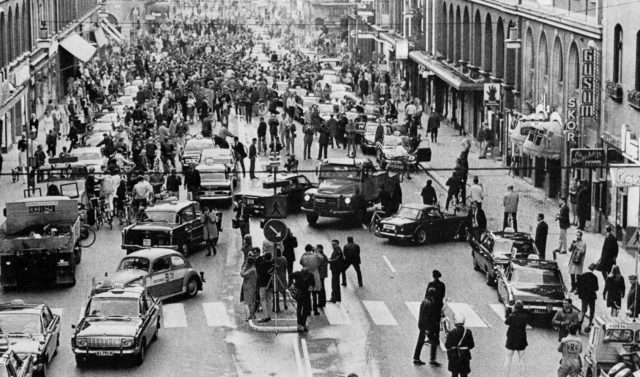
With all the pomp and circumstance the occasion deserved, the Swedish government asked all vehicles to stop in the street at 4:50 am. After 10 minutes, drivers were forced to turn around and officially switch to driving on the right-hand side. Luckily, most cars in Sweden already had steering wheels on the left so after a brief country-wide traffic jam, Dagen H was a success!
7. The shadow of a Hiroshima victim
All along the sidewalks of Hiroshima and Nagasaki, photographers found dark shadows in the shape of bicycles, trees, and people. Following the detonation of the atomic bomb, the intense heat and bright light created by the blast bleached everything it touched except for the objects and people that stood in the way – creating shadows of the people who were there during the explosion.
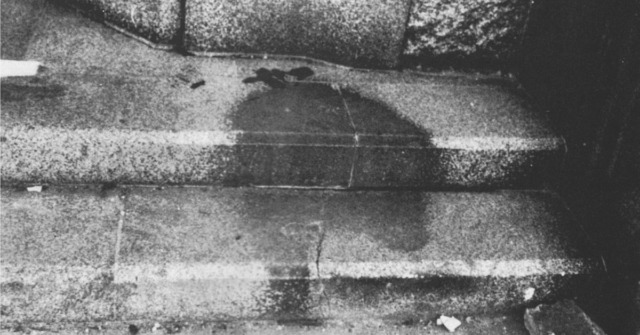
The attacks on August 6 and 9, 1945 forever changed the landscape of Japan, just like the shadows changed the streets of Hiroshima and Nagasaki. The following heatwaves and other attacks erased most of the shadows of the victims, but some – like the one above – are immortalized in photos as a reminder of the sheer destruction of nuclear war.
8. The Lipstick Killer’s plea
William Heirens, better known as the “Lipstick Killer,” got his moniker after scrawling a disturbing note in lipstick on the wall of a crime scene. Heirens later confessed to the murders of three women that took place between June 1945 and January 1946.
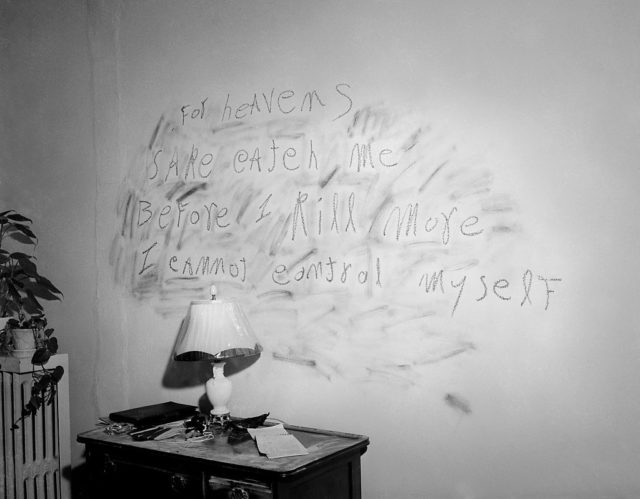
Heirins was just 17 years old when he committed the murders of Josephine Ross, Frances Brown, and six-year-old Suzanne Degnan. He confessed to the murders, claiming he had an alternate personality named “George” who was responsible for the crimes. Heirins pleaded guilty to all three murder charges and was sentenced to life in prison. In 2012, he died due to complications from diabetes after serving 65 years at the Dixon Correctional Center in Illinois, where he was supposedly the longest-serving prisoner in state history.
9. WWII gas masks for babies
Throughout World War II, the threat of chemical warfare frightened citizens and soldiers across Europe. To prepare for a possible gas attack, civilians could have protected themselves with gas masks. But what about children and infants who were too small to wear a conventional mask? This eerie 1940 photograph shows nurses testing out new “gas masks” for babies.
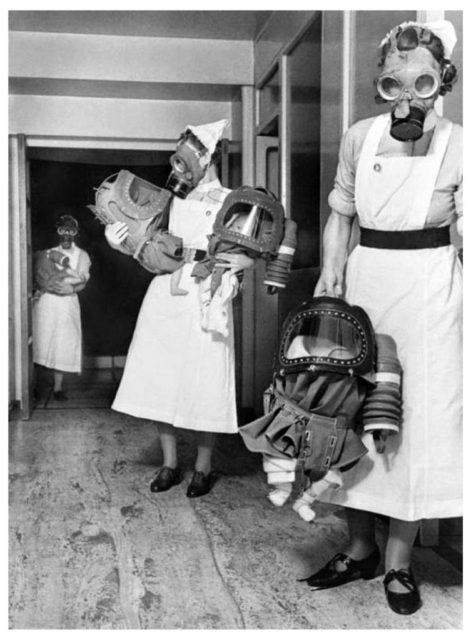
The mask was more like a suit. The baby could be placed inside the helmet-like device and a manual air pump filtered out the poisonous gasses and provided oxygen. Even though lots of research and planning went into the development of the baby gas suits, most parents thought an air-tight helmet wasn’t the safest thing for a baby to be in.
10. The Two-Headed Boy of Bengal
In 1783, a boy in Bengal was born with two heads. The second head was upside down with the neck that pointed straight up. The second head had a fully functioning brain, and would whisper random stuff to the other brain. The two-headed baby attracted great deal of attention and earned the family a fair amount of money.
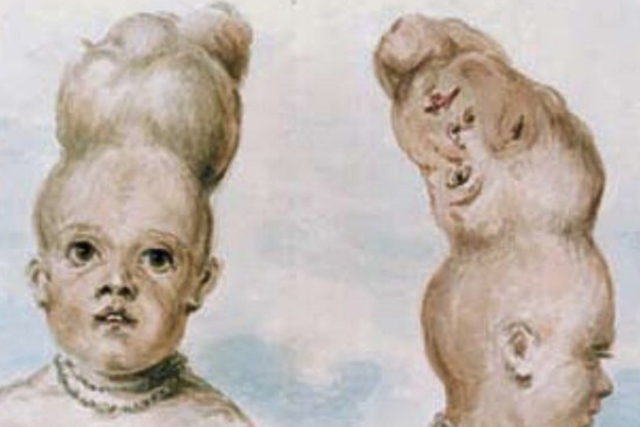
When the boy slept, the second head would be alert and awake with its eyes darting about. The second head also seemed to have emotions different than the boy’s emotions. Despite the odd phenomenon and strange appearance, the boy didn’t seem to suffer any pain. The skull of the Boy of Bengal can still be seen at the Hunterian Museum of the Royal College of Surgeons of London.
11. The Amityville Horror
The “Amityville Horror” has become one of the creepiest ghost stories of all time. When the DeFeo family was found murdered in their home at 112 Ocean Avenue in Amityville, New York, the entire country was shocked to learn that the slayings were carried out by one of the DeFeo children – 23-year-old Ronald DeFeo Jr. The photo below depicts investigators at the Amityville house after the DeFeo tragedy.
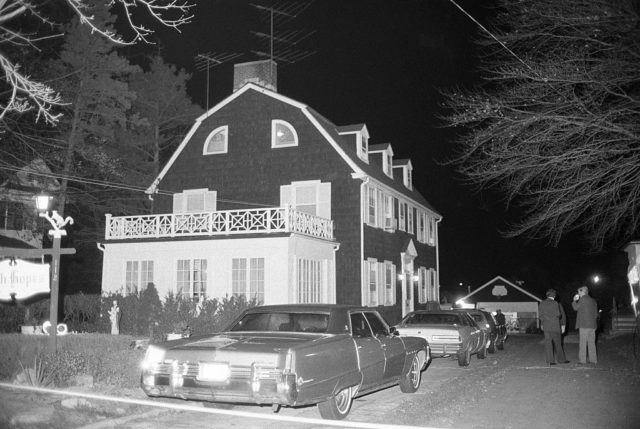
More from us: Not Everything Is As It Appears: Normal Photos With Extremely Creepy Backstories
Following the murders, the Lutz family moved into the house. They lasted 28 days before leaving the house, terrified of a ghostly presence that made children levitate, doors opened and closed on their own, and seemed to “possess” the patriarch George Lutz. Even famed paranormal investigators Ed and Lorraine Warren became involved in the case!
